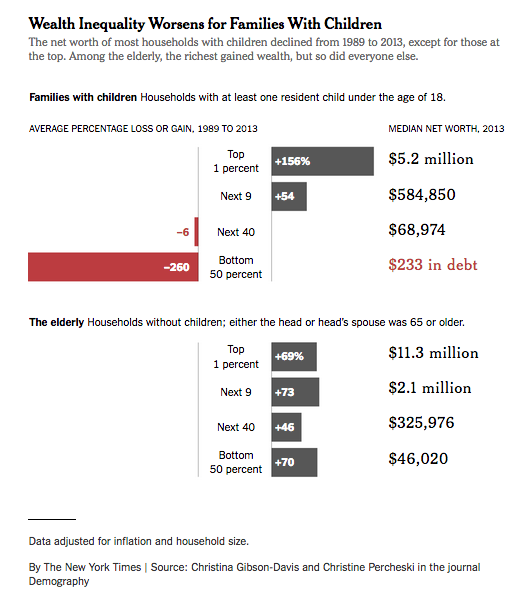What does economic inequality really look like?
Income alone doesn’t give a complete picture. Income inequality describes the gap between a six-figure salary and minimum wage. But the more alarming gap occurs in wealth — a household’s total assets minus debts. To understand how inequality is playing out in the United States, we need to look more closely at the wealth gap.
In a recent paper, we examined wealth among families with children and among the elderly. We focused on children and the elderly because they are considered the most vulnerable in our society and because so much social policy is geared to help them. According to our research, wealth inequality is much worse among families with children, and the gap has widened greatly over the past two decades, with consequences that may cascade through generations.
The extreme wealth inequality we have identified is a result of years of policies that have eroded both public spending and private income for families with children.
The demographer Samuel Preston warned in 1984 that the United States had made “a set of private and public choices that have dramatically altered the age profile of well-being,” by devoting resources toward improving conditions for the elderly while neglecting to do the same for families with children. “The constituency for children in public decisions simply appears too feeble to fight back,” he wrote.




